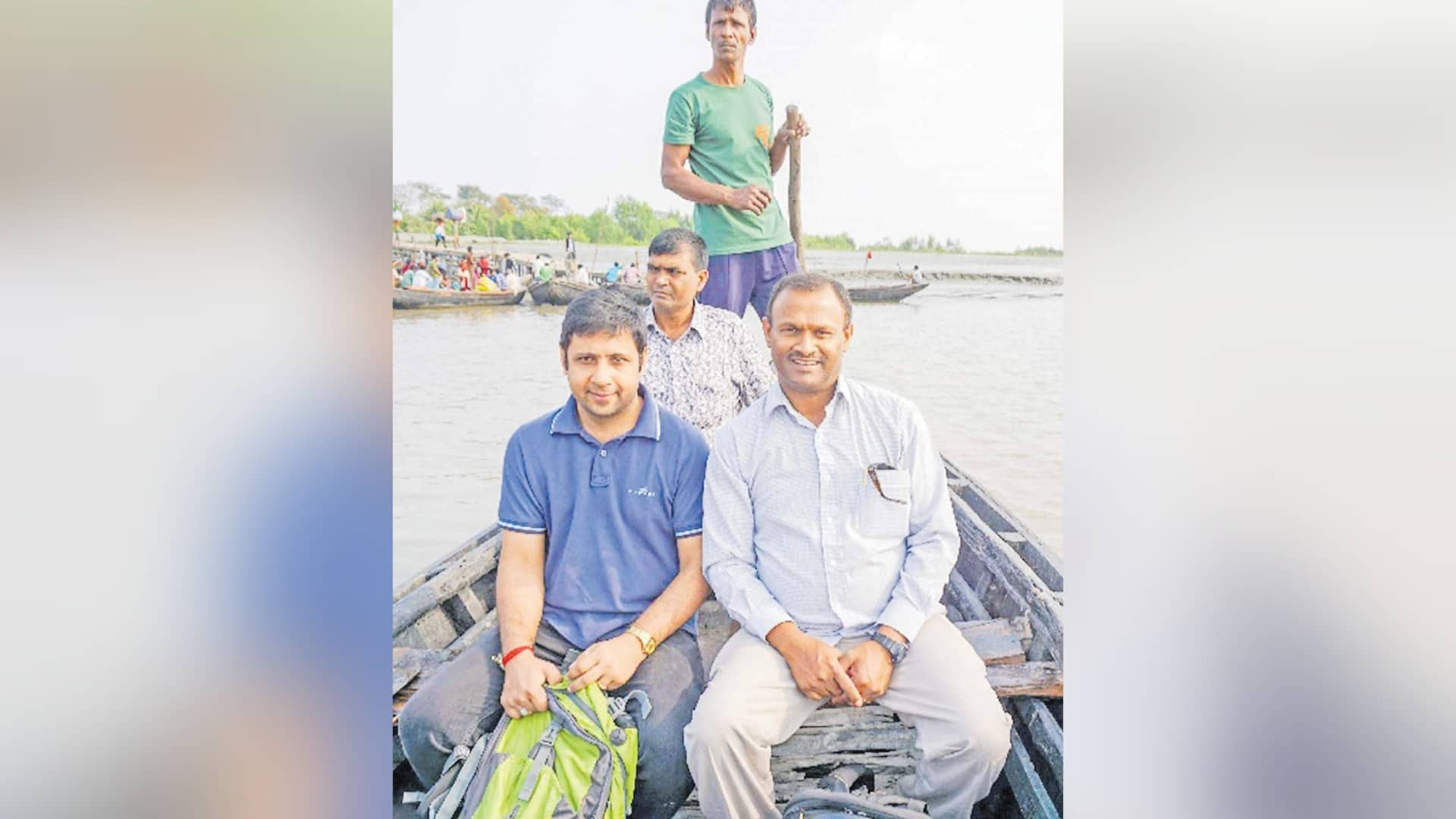From a small village child in Lavusa, Nadi to an esteemed academic at a prestigious Australian University, Professor Lalit Kumar used every bit of opportunity he got to carve his name into history.
Prof Kumar grew up with four siblings and attended Togo Bhartiya School and Shri Vivekananda High school. His upbringing was humble, his parents worked on a sugarcane farm.
He attained a Diploma in Education in 1981, a Bachelor of Science in 1988, Bachelor of Education in 1989, a Post-graduate Diploma in Physics in 1990 and a Masters in Physics (Environmental science) in 1993.
“I was a lecturer in physics at USP for five years from 1989 to 1993,” he recalled.
“In 1994 I received an Australian government scholarship to do my Doctorate at the University of New South Wales in Sydney.
“So I moved to Sydney in 1994 and undertook a Masters in Applied Science and a PhD. My main area of research was the use of satellite imagery for broad scale mapping and monitoring. At the time GIS and Remote Sensing was relatively new and a great research area to get into. After the completion of his PhD, Prof Kumar went on to lecture at the University of New South Wales and later took up a position as an Assistant Professor in the Netherlands.
“My wife Saroj and three children went with me and we enjoyed our time in Europe. After five years in the Netherlands we decided to move back to Australia in November 2002 to be closer to other family members.”
Upon his return, he joined the University of New England and has been teaching for the past 20 years as a Professor in Environmental Science.
“Here my main area of research moved to climate change, especially on using big data such as satellite and GIS data, to look at long term changes that had occurred and then projecting future change.
“A lot of the work was related to modelling climate change impacts on biodiversity, coastal agriculture, soil salinity, inundation, and impacts of sea level rise on coastal communities.”
With over 500 publications, 21 books and book chapters, 290 journal papers, scientific reports and professional papers under his belt, the professor sees no limits.
Over the past six years he has published an average of 30 papers per year, the highest number at UNE, from an academic pool of around 800 academics.
“To consistently out-publish everyone at this university is a great and a very satisfying achievement.
“I have a very large research group and have been able to attract good international PhD students due to the internationally recognised research we undertake.
“So far I have supervised 26 PhD students to completion, with five of them receiving the Chancellors Research Medal for excellence.
“I generally work 12 to 14 hours daily on my work, and this has resulted in the output and recognition.”
He published a book titled ‘Climate Change and Impacts in the Pacific’ which has been well received.
“I have also published a paper in the highest ranked climate change journal – Nature Climate Change, with impact factor 25.29.
“The papers I have published have been cited about 13,000 times, which is very good by international standards. The professor started publishing when he commenced his PhD studies.
He said the research culture in Australia was very different from Fiji where researchers seldom published their work and senior academics did encourage younger staff and research students to publish and share their research findings.
But perhaps his greatest achievement so far was when he was named in the elite group of international climate change scientists, a list compiled by Thomson Reuters in 2021.
“They created a matric for each of the researchers in the field of climate science and produced a list of the world’s top climate scientists and then published the list of 1000 most influential on their website, and I come at 694.”
Discovering that he made such a list infused in him a great sense of joy. He never dreamt he would one day reach this milestone.
“To be in that elite list of 1000 most influential climate scientists in the world is a great achievement, especially for someone from a place like Fiji. I am the only one from Fiji or from the entire Pacific Islands on that list. There are four from New Zealand, and six from India (a country of over a billion people).
“The list of 1000 is dominated by scientists from the US, UK, China, and Australia so you probably can comprehend the scale of this achievement and what it means for me and my family.
“To publish so many papers and to achieve what I have achieved, one needs a very supportive family. My wife Saroj has always been that person looking after our children and the home while I spent long hours at the university or travelled overseas for fieldwork.”
He said to never looked at the world and the work of others with awe, but created his own path so that others could look at his achievements with awe.
“If I can do it then all of you can do it and the only thing people in Fiji need are opportunities.
“I think with the Pacific region in the middle of a tug-of-war at the moment in relation to climate change and security, there will be greater opportunities available to people. Grab these, work hard, and make your family and Fiji proud.”




